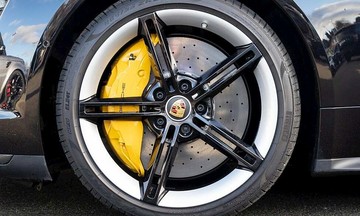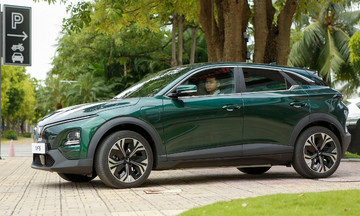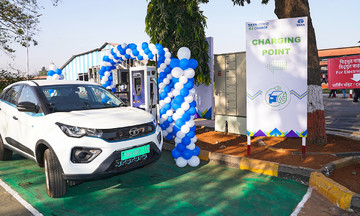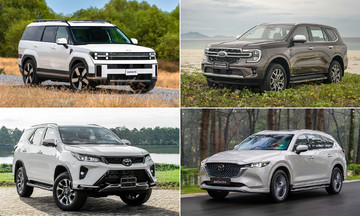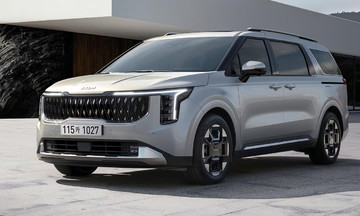Directive 20, issued by the Prime Minister, mandates that Hanoi eliminate gasoline-powered motorcycles within Ring Road 1 by 1/7/2026 and citywide by 2030. This has prompted residents within the affected area to consider switching to electric motorcycles sooner to adapt to the new mode of transport before the deadline next year.
Cost is a significant barrier for low-income earners. Nguyen Ngan, 43, a motorbike taxi driver living in rented accommodation in Hanoi and supporting two children back home, expressed anxiety about the new policy. Switching to an electric motorcycle is a financial burden, while not doing so threatens her livelihood.
She explained that her current gasoline-powered motorcycle would fetch no more than 5 million VND if sold, while a decent electric motorcycle suitable for her work would cost at least 20 million VND. The price difference is substantial compared to her monthly income.
"I'll have to re-evaluate my expenses, both for my children and myself in Hanoi, and save more aggressively to afford an electric motorcycle," Ngan said. Her workday starts at sunrise and ends at 2 a.m. the following day. Besides the cost of the vehicle itself, charging also presents a problem, as her landlord prohibits charging at the property.
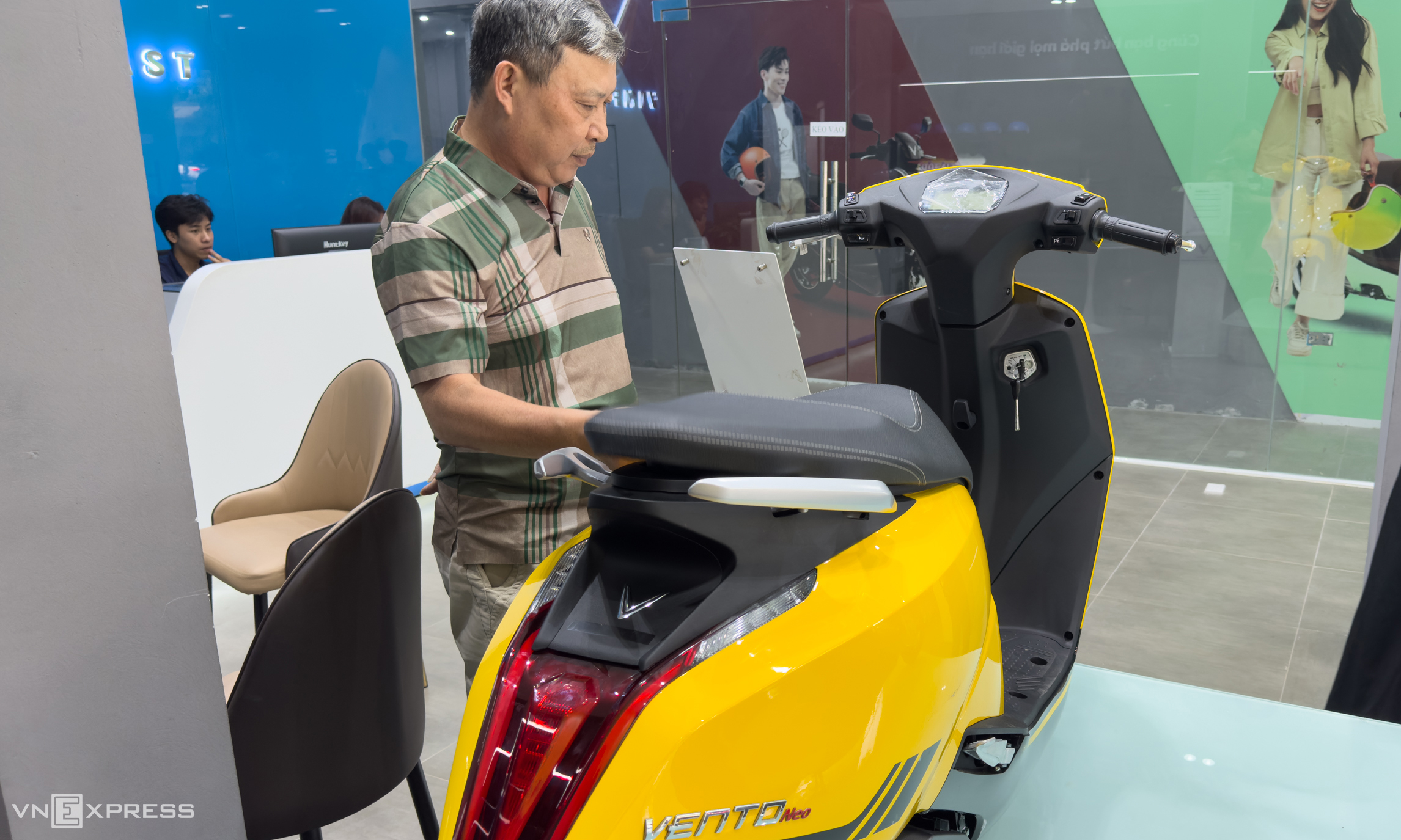 |
A customer examines an electric motorcycle at a dealership. Photo: Minh Quan |
A customer examines an electric motorcycle at a dealership. Photo: Minh Quan
Hanoi's newly announced support policy may alleviate some of these concerns. Residents owning gasoline or diesel motorcycles (registered before the resolution's effective date) in low-emission zones can receive a 3 million VND subsidy when switching to a "green" vehicle worth 15 million VND or more. Near-poor households are eligible for a 4 million VND subsidy, while poor households can receive 5 million VND. Each individual can receive support for a maximum of one vehicle until the end of 2030. The city also plans to waive 100% of registration fees for green vehicles from the resolution's effective date until the end of 2030.
Performance in hot weather is another concern. Dam Quoc Anh, 32, a teacher living in Xa Dan (within Ring Road 1), owns a house and uses a Yamaha motorcycle with his wife. Their daily commute is around 20-30 km. Despite having stable housing and finances, Quoc Anh is worried about safety and performance.
During Hanoi's extreme summers, with average temperatures exceeding 35 degrees Celsius and sometimes reaching 42 degrees Celsius, he worries about the impact of the heat on battery performance and the motorcycle's power output.
Many motorbike taxi drivers have reported that prolonged use in hot weather leads to battery overheating and reduced acceleration. However, for less frequent users like Quoc Anh, this is less of a concern.
Some electric motorcycles lack battery temperature gauges. Continuous maximum acceleration can trigger speed limitations. However, brands like Yamaha and Datbike equip their models with separate temperature gauges for the battery and motor, allowing riders to monitor and adjust their speed accordingly.
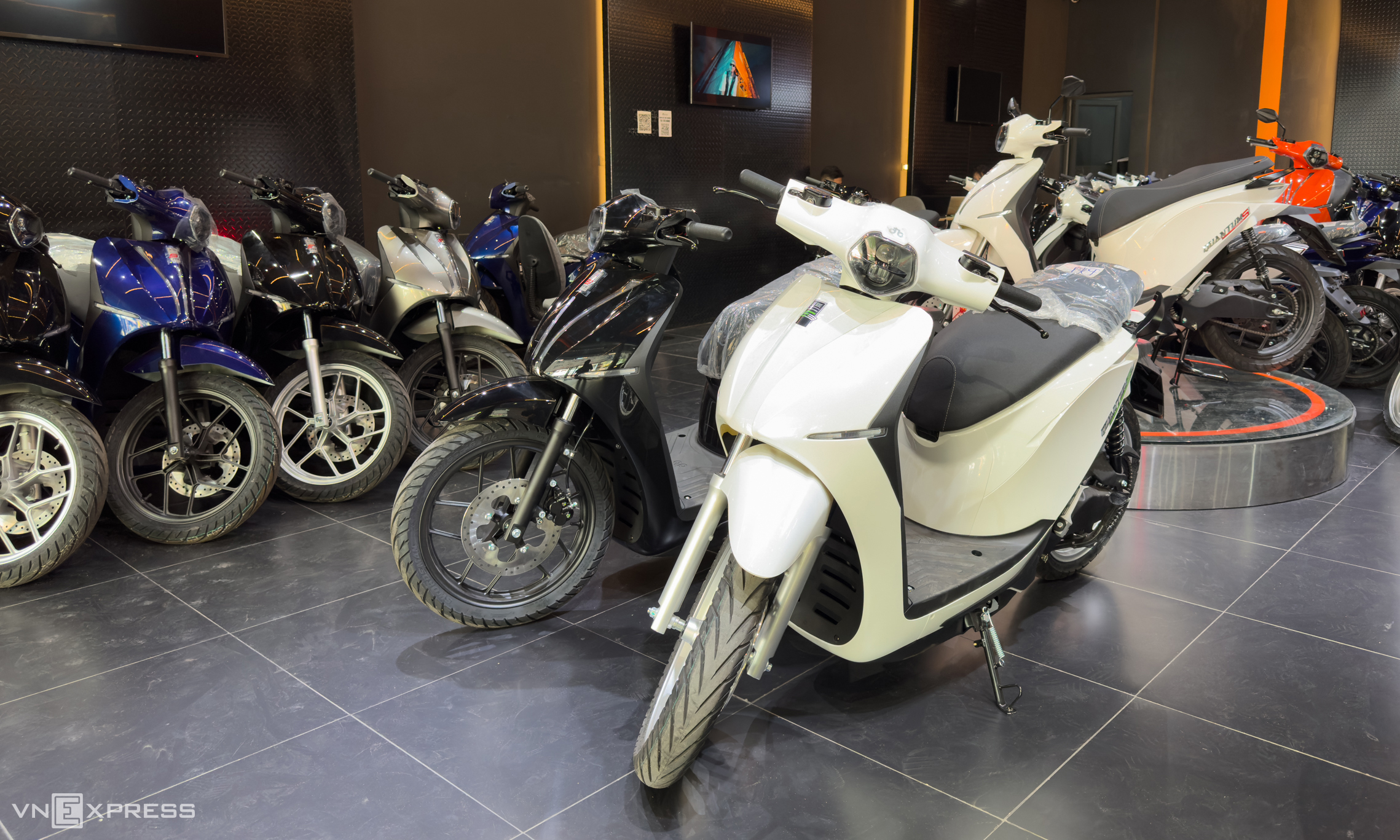 |
An electric motorcycle shop in Hanoi. Photo: Minh Quan |
An electric motorcycle shop in Hanoi. Photo: Minh Quan
In hot conditions, riders are advised against unnecessary full-throttle acceleration and parking in direct sunlight. After riding in hot weather, it's recommended to wait 30 minutes to an hour for the battery to cool down before charging.
Finding tire repair shops is also a challenge. While front tires are easily replaced or repaired, the rear tire often houses the motor, making the process more complex. Many mechanics lack the experience or specialized equipment to handle these repairs.
An experienced electric motorcycle mechanic explained that older Chinese models like the 133 and X-men were easier to repair. Modern electric motorcycles with small punctures can be patched, similar to gasoline motorcycles. However, larger punctures requiring tire replacement take an additional 10-20 minutes. Some models require removing the trunk, disconnecting the battery and wiring, and using specialized equipment to avoid damaging the motor.
 |
A motorcycle repair shop now services electric motorcycles. Photo: Minh Quan |
A motorcycle repair shop now services electric motorcycles. Photo: Minh Quan
Most current electric motorcycles have rear-wheel motors. Few use a chain drive system with a centrally located motor, which simplifies tire changes. Models like the Honda CUV e: and Yamaha Neos offer easier rear tire removal compared to other models.
Electric motorcycles require less maintenance. However, their tires and brakes wear faster than those of gasoline motorcycles due to their heavier weight and quicker acceleration. Brake replacements are typically needed after 7,000-10,000 km, compared to 15,000-20,000 km for gasoline motorcycles.
Beyond individual concerns, many residents and workers within Ring Road 1 believe the ban on gasoline motorcycles is being implemented too hastily. Public transportation remains limited, and there are doubts about the power grid's capacity to handle increased charging demands. Inconsistent policies, such as promoting electric motorcycles while many apartments prohibit them or restrict battery charging, further complicate the transition. Battery swapping solutions offered by companies like Honda and Selex Motor are considered impractical due to pricing, station locations, and battery quality.
Furthermore, battery recycling and disposal pose environmental risks.
Minh Quan






